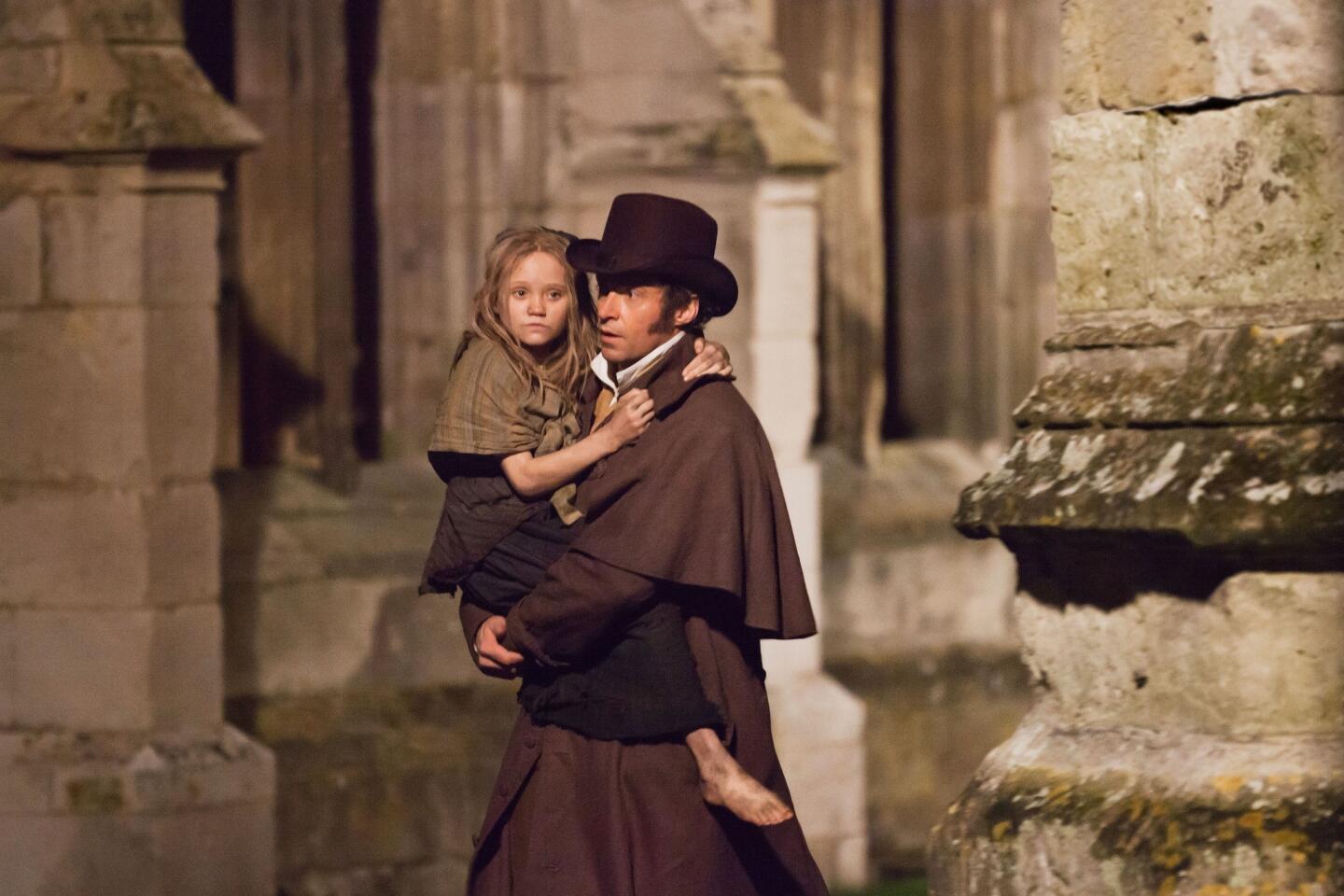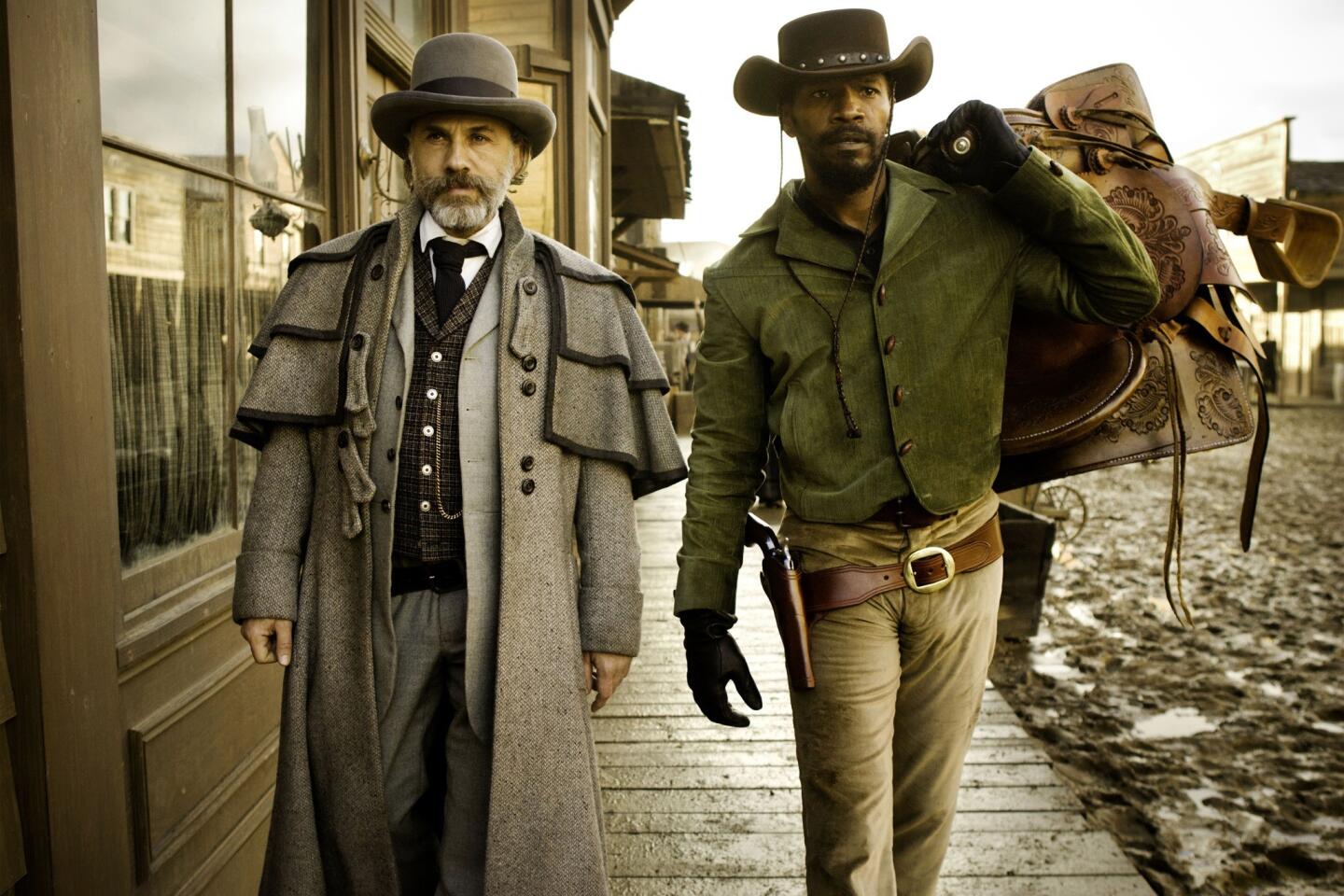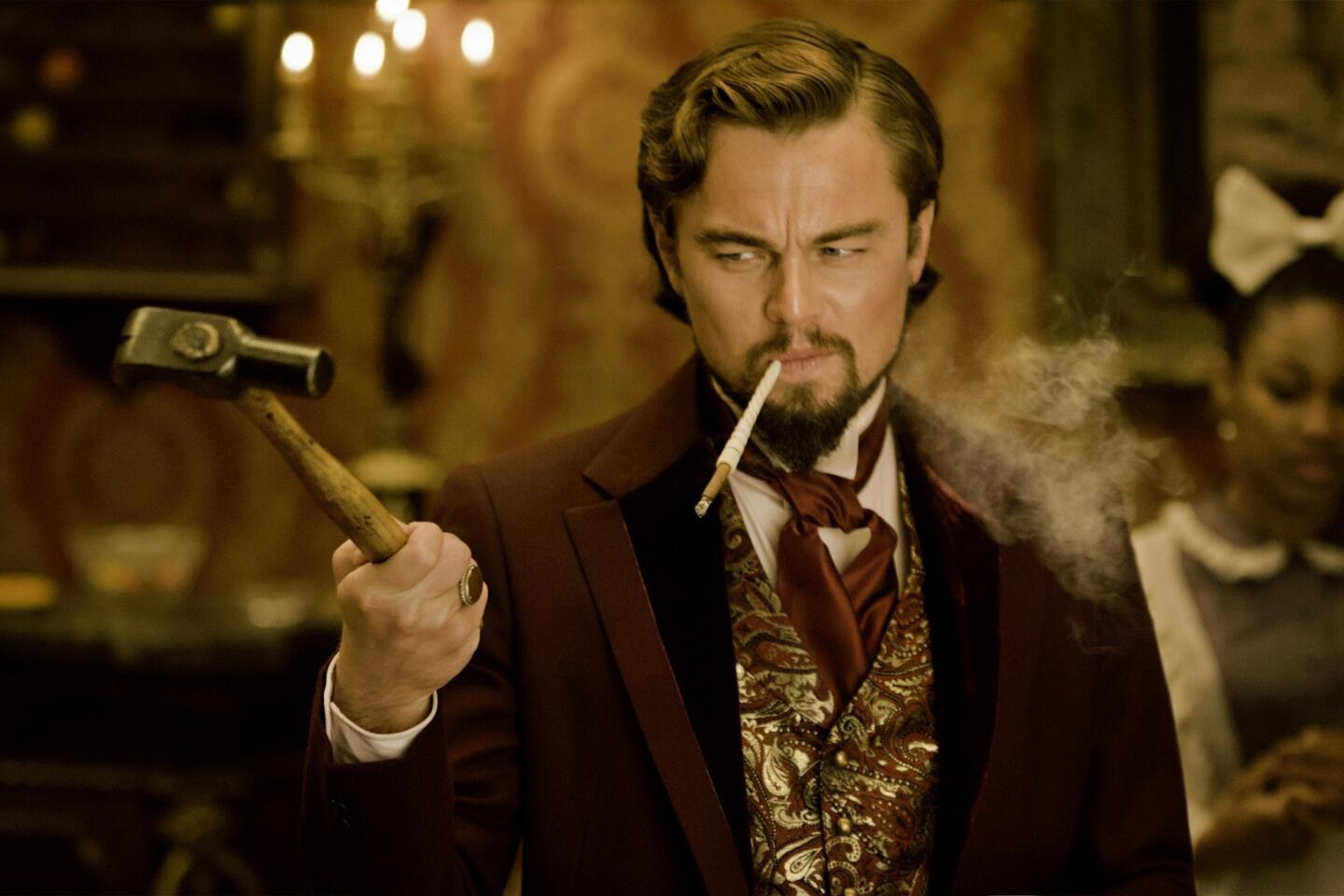Dressing the parts: Film costumes that help make statements
As the year winds down, multiplexes fill up with films vying for award-season consideration. Thanks to a bumper crop of period movies, late 2012 has showcased some serious talent in the field of costume design. Some of the films are worth watching for wardrobe alone while others serve up but a handful of standout screen-style moments. But whether it’s Lincoln’s stovepipe hat or Janet Leigh’s curve-hugging dress, the costumes here have one thing in common: They help advance the story without hijacking it.
‘Anna Karenina’
Costume designer Jacqueline Durran mixes 1870s period details with elements of 1950s haute couture to create the resplendent, bustle-back gowns worn by Keira Knightley in this adaptation of Leo Tolstoy’s novel, staged on a theater set. The luxurious velvets, feathers and furs, hats and veils inspired an Anna Karenina for Banana Republic collection. The millions of dollars’ worth of diamond jewelry featured in the film were courtesy of Chanel.
‘Django Unchained’
(opening Dec. 25)
Thanks to a story line that travels from the plains of Texas to the Deep South circa 1856, Quentin Tarantino’s genre-mixing spaghetti western provides perhaps the widest smorgasbord of men’s period clothing of the holiday movie season. Costume designer Sharen Davis mines the cowboy closet, captures the genteel South and throws in some European-inspired touches (bowler hats, waistcoats) and even a soupçon of steampunk via some eclectic eyewear choices. Of particular note are Django’s first post-slavery blue velvet and white lace neck ruffle ensemble and Christoph Waltz’s bounty hunter King Schultz kitted out in a natty gray Inverness coat accessorized with a jaunty gray bowler hat.
‘Hitchcock’
From the beige slip dress that the director’s wife, Alma (Helen Mirren), dons in the opening scene to the armor-like black suit, white dress shirt and narrow black necktie the corpulent director (played by Anthony Hopkins) wears in nearly the entire film, the clothes chosen by costume designer Julie Weiss alternatively guard and expose aspects of the characters’ personalities. On the women’s side, the focus is on the wardrobe of Scarlett Johansson’s Janet Leigh. Often in white (a counterpoint to the black-clad director), Johansson smolders in a figure-flattering, bare-shouldered, silk evening gown in one scene and a no-nonsense, high-collared but extremely form-fitting shirtdress in another. Taken together, the casting and wardrobe choices go a long way toward explaining how Leigh became the object of Hitch’s unhealthy obsession.
‘Gangster Squad’
(opening Jan. 11)
The combination of a period setting (1949 Los Angeles) and high-profile costume designer Mary Zophres makes this a film full of stylish flourishes. The gangsters and gumshoes of late ‘40s L.A. wore the crisp cones of pocket squares in their jacket pockets, wide-brimmed fedoras upon their heads and serious statement neckties with artful arrow and diamond embroideries. As Grace Farady, Emma Stone wears a lot of va-va-voom dresses, the most eye-catching one in red satin, complete with vampish Angelina Jolie-like leg slit.
‘Les Misérables’
(opening Dec. 25)
Translating the beloved musical from stage to movie meant the filmmakers could go big — filling the screen with soaring vistas and populating the streets and sewers of Paris with thousands of people: tattered rag-clad bourgeoisie; crisp, uniform-clad soldiers and then the principal characters, whose clothes and characters age as their fortunes shift over the course of almost two decades.
The movie’s grand scale means that while costume designer Paco Delgado’s efforts certainly make an impact, the details of exactly how aren’t immediately made manifest. The best example of this can be seen as Anne Hathaway’s Fantine wastes away. Delgado chose to dress her in clingy fabrics and airbrush the sides of her red dresses darker colors, helping create the look of a gaunt young woman suffering from consumption.
Slightly more overt is the recurring use of colors chosen specifically to symbolize the French Tricolor flag. Examples include Javert’s royal blue military uniform, the striking red jacket Enjolras dons while manning the barricades and Cosette’s white wedding dress.
‘Lincoln’
Costume designer Joanna Johnston’s biggest triumph here isn’t that she captures the iconic parts of the 16th president’s wardrobe — the battered stovepipe hat, the simple, almost-threadbare brown suits — without veering into caricature. Nor is it that, by departing from the film’s muted color palette with Mary Lincoln’s more colorful dresses, Johnston establishes the first lady as a kind of 19th century shopaholic (which, indeed, she was). Rather, it is that Johnston achieves both goals while staying historically accurate.
“Almost all of Mary’s costumes are incredible replicas of pieces that can be found in photographs and paintings,” Johnston explains in the movie’s production notes, “right up to the final dress you see Mary in while Lincoln is dying.”
Times fashion critic Booth Moore contributed to this report.
More to Read
Only good movies
Get the Indie Focus newsletter, Mark Olsen's weekly guide to the world of cinema.
You may occasionally receive promotional content from the Los Angeles Times.











